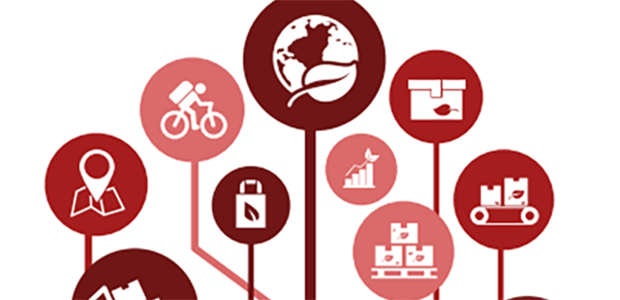
The power of vertical SaaS in climate tech: bringing value to the transport and logistics industry
Technology has a vital role to play in addressing climate change if we’re to make any meaningful change – a point reiterated in the IPCC’s Sixth Assessment Report published earlier this year.
This article originally appeared in the July/Aug issue of Startups Magazine. Click here to subscribe
As the urgency to combat climate change increases, so too does the need to find innovative ways to tackle the root causes of emissions in the world’s highest-emitting industries. Vertical Software as a Service (SaaS) has emerged as a powerful approach for tech companies looking to make meaningful differences.
In this article, we explore why vertical SaaS is the key to unlocking tech’s potential to help slow climate change and highlight how we’re using this approach to reduce the impact on the climate in the transport and logistics (T&L) sector.
Why taking a vertical focus makes sense for climate tech
Vertical SaaS solutions are specialised software-as-a-service solutions designed for specific industries. They cater to the unique needs of businesses within a specific vertical, offering targeted solutions, improving efficiency, and providing industry-specific insights for users.
As with any business, profitability is a significant success criterion for climate tech companies. However, unlike many businesses, they also gauge success through environmental impact. Taking a vertical approach allows climate tech businesses to gain deep industry knowledge, understand the industry-specific nuances that create barriers to effective climate action, and identify the most effective emissions reduction strategies. This enables them to achieve the most significant impact, meeting their climate goals.
By concentrating efforts on a single vertical, climate tech solutions can be easily scaled to rapidly deploy improvements, updates, and new features as industry-specific climate-related needs evolve. Concentrating on a specific industry also enables businesses to foster a deeper collaboration within an industry, bringing together stakeholders, suppliers, and customers on a common platform.
How we’re tackling carbon emissions in transport and logistics
At Pledge, we started out with a single purpose – to create a solution that unlocks the maximum impact on the climate crisis in the shortest time span. We approached this challenge by identifying the highest emitting industries on the planet in order to maximise our chances of having the greatest environmental impact. To achieve this goal, we had to develop the best and most accessible solution on the market – which requires focus. Taking cues from vertical SaaS playbooks, we decided that a product-led approach would be the best approach for us to unlock climate action at scale.
T&L contributes up to 11% of the world's total GHG emissions if you include the emissions from ports and warehouses. For many companies, supply chain emissions comprise over 70% of their overall carbon footprint. It’s important to recognise that the impact of these emissions is not limited to the logistics sector alone but also contributes to the carbon footprint of businesses that heavily rely on the transportation of goods.
T&L is also an industry well suited to benefit from vertical SaaS due to the fragmentation of data, the lack of data standardisation, and the increasing demands for emissions reporting. The complex ecosystem of shippers, freight forwarders, carriers, ports and warehouses create difficulties in integrating sustainability practices. Data connectivity issues and varying naming conventions further hinder the efficient exchange of information, resulting in inaccuracies and distrust of carbon emissions calculations.
To ensure we had the most significant impact, we needed to create a solution that helped utilise available data, synthesise it into meaningful and accurate emissions data, and make it easily accessible to all players across the T&L ecosystem. This led us to focus our solution predominantly on freight forwarders. Freight forwarders are vital connectors in the logistics industry, orchestrating the movement of goods across carriers and service providers. With access to end-to-end shipment data, they hold the key to measuring and tracking carbon emissions within supply chains, enabling meaningful climate action.
Freight forwarders’ customers – shippers and other logistics service providers – will need to start measuring and reporting their carbon emissions in the near future. By transforming the shipment data freight forwarders already have to the emissions data their customers need, we’re able to provide them with additional value-added services they can pass directly on to their customers. Finding this niche and identifying the value in transforming largely redundant shipment data into valuable emissions data, enables us to generate demand for our product, have a wide-reaching environmental impact and bring tangible value to players across the supply chain and their end customers.
Vertical SaaS offers hope for the climate
The climate crisis is becoming increasingly desperate. By focusing on a specific industry, climate tech companies trade breadth with depth, allowing them to differentiate in an increasingly competitive ecosystem, be more visible to their target customer, and respond more accurately to their needs. This approach will also foster trust in climate tech solutions in traditionally resistant industries, helping to alter the perception of sustainability from being a necessary hindrance to a valuable business opportunity.

